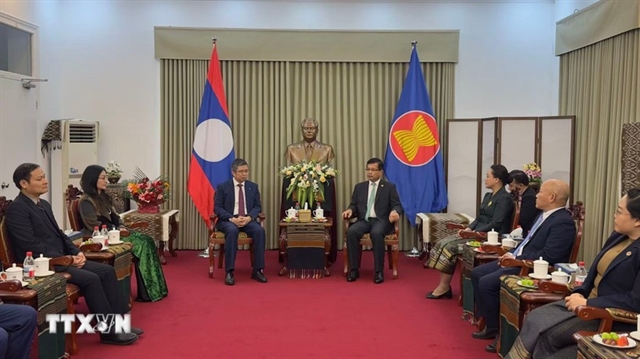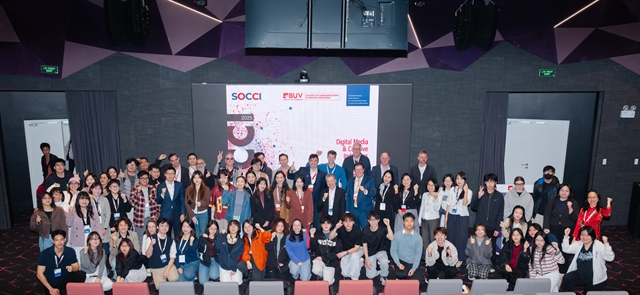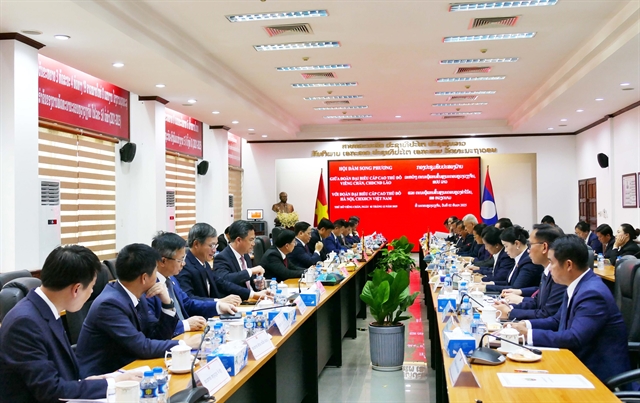 Politics & Law
Politics & Law


|
| A corner of Hà Đông Ward, Hà Nội.— VNA/VNS Photo Tuấn Anh |
HÀ NỘI — Ministries, central agencies, State-owned economic groups and corporations have been told to focus on developing the 2026-30 Socio-economic Development Plan with the goal of achieving an average annual GDP growth rate of 10 per cent or higher during the period.
The target follows Prime Minister Phạm Minh Chính’s signing of Directive No. 31/CT-TTg on Saturday on the formulation of the plan.
The directive said the plan must align with the guidelines and policies of the Party as well as resolutions and conclusions of the Party Central Committee, the Politburo, the Secretariat, the National Assembly and the Government; the documents of Party congresses at all levels; and the instructions of the Party General Secretary, the Prime Minister.
The development orientation must ensure rapid yet sustainable economic growth, targeting double-digit increases while maintaining macroeconomic stability, controlling inflation and ensuring major economic balances.
The plan also calls for establishing a new growth model and restructuring the economy, accelerating industrialisation and modernisation, positioning science, technology, innovation and digital transformation as key driving forces.
It also emphasises the development of high-quality human resources and the effective utilisation of the advantages offered by deep international integration, alongside improving living standards and ensuring social welfare.
Chính said: “Social progress, fairness and environmental protection must not be sacrificed for mere economic growth, aiming instead for growth that is fast, sustainable, inclusive and beneficial to all citizens.”
The plan should be built upon a comprehensive and accurate assessment of the implementation of the 2021-25 plan, along with sound forecasts of global, regional and domestic contexts in the coming years.
It must demonstrate fresh thinking, strategic vision and breakthrough solutions to seize opportunities, overcome challenges and address limitations from the previous period, he said.
The approach should combine strengthening internal and leveraging external resources with domestic strength as the decisive foundation and foreign input as an important catalyst for breakthroughs.
Key indicators for the plan must be feasible, clear and aligned with practical realities, consistent with the 2021-30 Ten-Year Strategy, and supported by accurate, synchronised and unified data across sectors and localities to facilitate effective monitoring and evaluation.
Core tasks
A top priority will be to allocate resources to perfect the legal system in a streamlined, coherent and scientific manner.
Law-making and enforcement must stay closely attuned to reality, capture every opportunity, and unlock all potential resources, serving as the 'breakthrough of all breakthroughs' in institutional reform.
The directive also calls for continued improvement of the business and investment environment, encouraging innovation, entrepreneurship and the development of science and technology markets, while mobilising all available resources for development.
Administrative procedures will be reviewed and simplified, shifting from pre-inspection to post-inspection and reducing compliance costs for citizens and businesses.
Administrative discipline must be strengthened in the public sector, and mechanisms for identifying, attracting, recruiting and rewarding talented individuals in State agencies and public institutions must be improved.
Barriers and bottlenecks in various markets must be addressed, and the State-owned enterprise sector, particularly large economic groups, must be strengthened.
The restructuring of weak credit institutions and public investment will continue.
The private sector is identified as the primary engine of growth and innovation, with priority given to building regional and global-scale private conglomerates, while also supporting small and medium-sized enterprises and fostering household and cooperative economies.
The directive underscores the importance of implementing breakthroughs in science, technology, innovation and national digital transformation, as outlined in Politburo Resolution No. 57-NQ/TW.
It calls for bold mechanisms and policies to prioritise resources for science and technology development, focusing on 11 groups of strategic technologies.
It also promotes the growth of the digital economy, artificial intelligence, creative industries, strategic technologies, the sharing and data economy, smart manufacturing, e-commerce and digital services.
Developing high-quality human resources to international standards is deemed essential to meet the needs of strategic industries and technologies.
Education and training must be enhanced to foster learners’ comprehensive capabilities, qualities and physical well-being, tied to building and promoting Vietnamese cultural and human values suitable for the new era.
The education system must undergo comprehensive reform, prioritising creativity, entrepreneurship, STEM (Science, Technology, Engineering, Mathematics), foreign language proficiency (with English to become a second language in schools), digital skills and modern technologies.
The directive also sets out infrastructure goals to build synchronous and modern infrastructure, efficiently exploit new development spaces, and promote urbanisation alongside the new rural development programme.
The Government also plans to restart construction of two nuclear power plants in the communes of Phước Dinh and Vĩnh Hải, in the south-central coastal province of Khánh Hòa, aiming for completion by December 31, 2030, and to accelerate the development of energy infrastructure to meet the high-growth demands of the new period while ensuring energy security. — VNS


.jpg)

